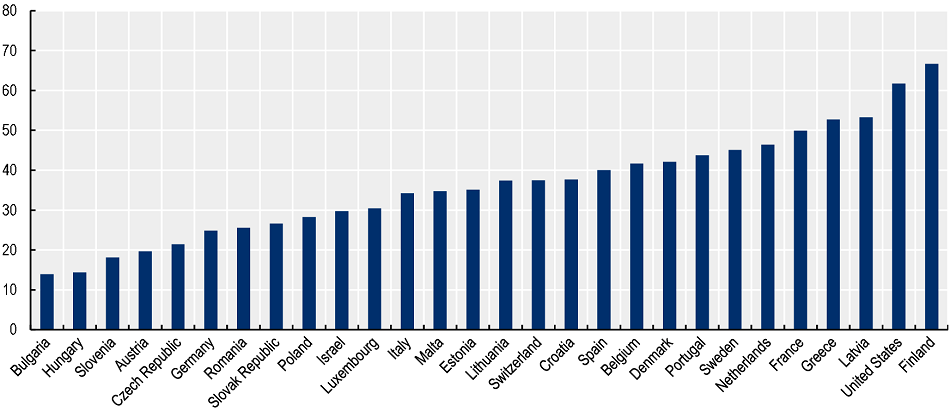Health

Time for Better Care at the End of Life
With more chronic conditions and an ageing population, a growing share of the population
will need end-of-life care, reaching close to 10 million people by 2050. While end-of-life
care services help improve quality of life through relieving pain and other symptoms,
currently, there are substantial gaps in the provision of services. More than half
of deaths still occur in hospital across OECD countries, despite home generally being
the preferred place of death, because of lack of appropriate services and poor care
co-ordination. There are marked inequalities in access with people from higher education
twice as likely to receive end-of-life care services than those with low education.
Planning, recording of wishes and shared decision-making fall short of what is desirable,
with only one-quarter of wishes being recorded in the form of advance directives.
People at the end of life do not always receive appropriate symptom relief, while
others suffer from overtreatment. This report suggests avenues to improve care for
the dying by enhancing measurement and monitoring of quality and rethinking funding
and governance models of care. End-of-life care could also be improved by increasing
knowledge among health care staff across different care settings, and making communication
around the topic more person-centred.
Available from February 07, 2023
In series:OECD Health Policy Studiesview more titles
TABLE OF CONTENTS
| Foreword | |
| Executive summary | |
| Assessment and recommendations | |
| Removing barriers to access end‑of‑life care | |
| Making end-of-life care more people‑centred | |
| Renewing focus on high-quality end-of-life care | |
| Ensuring that end-of-life care is appropriately financed | |
| Strengthening governance and evidence‑based design for end‑of‑life care |
Powered by OECD iLibrary

 Follow us on Twitter via
Follow us on Twitter via